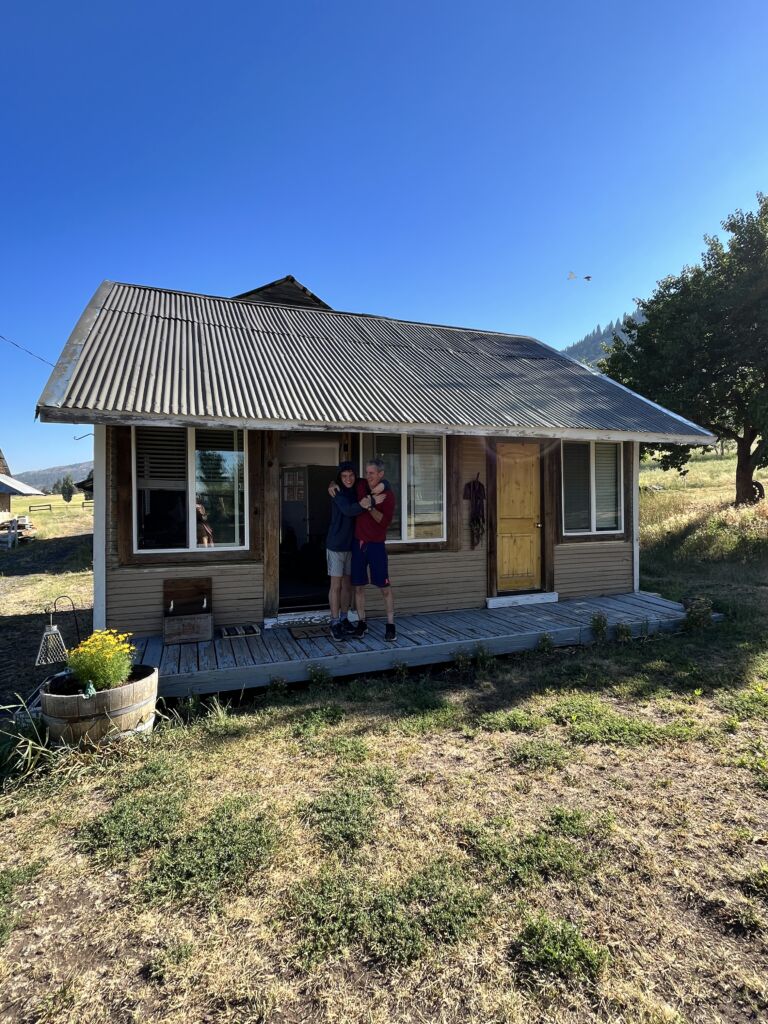
Living in the countryside is tempting for many of us. Beyond the slower pace of life, and a more casual attitude that can decrease stressful demands of a city or bustling town, there’s also comfort, convenience, and self-reliance that need to be weighed. So sustainable energy has become a more tempting solution that can prove to be more reliable for severe weather and rural communities.
Let’s just be blunt: When it comes to keeping the lights on and the heat or AC running, rural homes often get the short end of the stick. Power outages can drag on for days and there’s the waiting for infrastructure improvements that never seem to arrive. As the cost of installing sustainable energy solutions like solar panels and battery backups goes down, more have been considering them as more reliable and cost-effective solutions for their homes.
Plus, mini-split heat pumps have been gaining popularity for their dual-function features and the tax credit that’s available. “Starting January 1, 2025, air source heat pumps that are recognized as ENERGY STAR Most Efficient are eligible for this credit.”
Energy Challenges in Rural Communities
City dwellers rarely worry much about how long power outages last. But if you live in the countryside, it’s a different issue. Many country homes sit far from central grid hookups, meaning longer waits in the dark when storms hit and slower access to grid improvements that urban areas take for granted.
Did you know that rural Americans pay up to 25% more on energy compared to those who live in cities? It’s not hard to see why since there are longer distances for electricity to travel. That’s worrying because severe weather-related power outages have increased by 78% between 2011 and 2021. We all know who feels the pinch most: Semi-rural and rural communities.
Sustainable Energy Generation at Home
Setting up home energy systems creates energy security. For homeowners with more cows than neighbors, generating sustainable energy right on your property reduces your dependence on long-distance power lines that are vulnerable during severe weather. It also brings more predictability to your monthly costs. (No more gasping when you open the electric bill during peak winter months!)
Solar Power
One of the most delightful things about solar energy is how it can be tailored just right, like a well-fitted work glove. Systems can be designed for tiny hunting cabins or workshop sheds, sprawling family farmhouses, or working agricultural properties. Pairing your solar setup with a home battery ensures you’ve got backup juice during outages, meaning you can finally retire that noisy, gas-guzzling generator that scares the chickens every time you fire it up.
These systems also help your whole community’s power situation. When enough homes make and store their own electricity, utilities don’t get those massive demand spikes that lead to blackouts and costly maintenance. That creates a ripple of benefits beyond your own property line, helping neighbors and friends even if they haven’t gone solar yet.
This is especially important in places like Wisconsin, Minnesota, and the Dakotas, regions where farmhouses dot the landscape like freckles, winters seem to last half the year, and folks don’t realize how much they depend on reliable energy until the lights go out and the pipes start to freeze.
Making Sustainable Energy More Accessible
One of the biggest boosts for solar-curious homeowners is the incentives waiting to be claimed. Federal programs, like the Residential Clean Energy Credit, let you pocket 30 percent of your installation costs as a tax credit through 2032, taking a big bite out of that upfront expense. That can transform a seemingly budget-busting investment into manageable long-term savings that any penny-pinching homeowner would appreciate.
State programs pile on even more goodies. In rural areas where homes are few and far between and utility infrastructure is showing its age, state and local governments often toss in additional rebates, net metering deals, and property tax breaks to encourage folks to go solar.
For homeowners in rural states, it’s worth digging into how these layers of sustainable energy incentives stack up. To make sense of the whole confusing mess and make sure you don’t miss out on free money, guides for specific states (like this solar in Wisconsin guide) offer straightforward steps to plan your project without pulling your hair out in frustration.
Perks of Making Your Own Sustainable Power
Home energy systems, whether solar panels on your barn roof or a small wind turbine on your land, offer one of the most direct ways for your household to shrink its environmental footprint. By creating electricity from renewable sources, rural communities can significantly cut their dependence on fossil fuels, which still power most of our country’s electricity plants.
For comparison, currently about 60 percent of our nation’s electricity still comes from fossil fuels like coal and natural gas. Both spew greenhouse gases and other nasty pollutants when they’re burned to make lights turn on.
Benefits of Sustainable Energy
When your home produces its own sustainable energy, every kilowatt-hour you generate means less electricity needed from those carbon-belching central plants. Did you know that a typical home solar setup, making about 8,000 kWh yearly can offset around 5.5 metric tons of carbon dioxide annually? Over time, that adds up to a meaningful impact, like planting a small forest without having to dig a single hole!
Local wildlife and plants also catch a break from decentralized, renewable generation. Traditional power generation guzzles water for cooling and often tears up habitats for mining or drilling.
In contrast, solar panels and batteries need no water while running and produce no emissions, noise, or chemical runoff. This makes them particularly well-suited for environmentally delicate areas, including the farmlands, forests, and nature preserves that make rural America so special.
Besides, distributed clean energy production helps decrease transmission losses. Electricity typically wastes about 5 percent of its energy just traveling from power plants to your home. With on-site generation, this waste vanishes like morning dew.
Building Sustainable Energy Resilience
Rural electricity systems face more and longer outages due to aging transmission lines, long distances between homes, and greater exposure to Mother Nature’s mood swings.
In fact, rural communities suffer through more frequent and longer power outages than their city cousins. Severe weather events like blizzards, wind damage, or summer demand surges can knock out power for days, leaving you without heating, water pumps, communications, and essential home medical devices just when you need them most. While a backup generator can help, it also needs to be maintained and fueled regularly.
Installing a solar system with battery backup gives you peace of mind and continuity. With enough storage capacity, batteries can keep critical appliances running even during multi-day outages. Some clever homeowners pair solar with backup generators for even greater energy security, ensuring uninterrupted power even during those endless cloudy or snowy periods when the sun plays hide and seek.
Energy resilience becomes especially vital for folks with agricultural properties. Dairy farms, poultry barns, and irrigation systems all hunger for steady electricity. Any hiccup in service can spoil produce, stress livestock, or even wipe out entire crops. With solar and storage, these operations can reduce their vulnerability to grid problems and boost their self-reliance.
Further Tech Upgrades
Once you’ve got reliable power flowing to your rural home, the possibilities really open up. Why stop there when you can make country living just as convenient as city life while still enjoying those gorgeous sunsets and peaceful mornings?
Faster Internet Access with Satellite and Fixed Wireless
Traditional cable or fiber connections often don’t bother stretching out to rural communities. But that doesn’t mean you’re stuck with an internet that crawls like a turtle. Satellite internet services, such as Starlink, now beam high-speed, low-latency internet to even the most remote farmhouses.
Fixed wireless internet is another clever solution gaining fans in rural communities. It’s less fussy during stormy weather than satellite and doesn’t need extensive cabling snaking through your property.
Smart Home Energy Management
Pairing your shiny new solar system with smart energy tools gives you much more control over your homestead’s power use. Smart thermostats, energy monitors, and load management systems can automatically direct solar electricity to power-hungry appliances during sunny days or carefully conserve battery storage overnight.
Systems like the Enphase Energy System bring together solar, batteries, and smart control under one user-friendly umbrella for maximum efficiency without requiring an engineering degree.
Water and Waste Tech for Off-Grid Convenience
Modern composting toilets and greywater recycling systems reduce your dependence on municipal plumbing, which might not even reach your property anyway! Off-grid homes can also install pressure-boosted rainwater collection systems or well monitoring gadgets to keep tabs on water levels and quality.
Backup Power Integrations
As mentioned earlier, combining solar with battery storage or hybrid generator systems creates a fail-safe setup that would make any prepper proud. Rural homeowners are increasingly using automated transfer switches that kick in seamlessly when severe weather strikes and the grid power is down.
Home-based energy generation has become a path toward independence, sustainability, and long-term value for country dwellers across America. Naturally, you will need the right mix of sustainable energy and smart tech to make rural living more convenient and cost-effective, as everyone’s power needs are different and personal. But, it’s worth considering.
